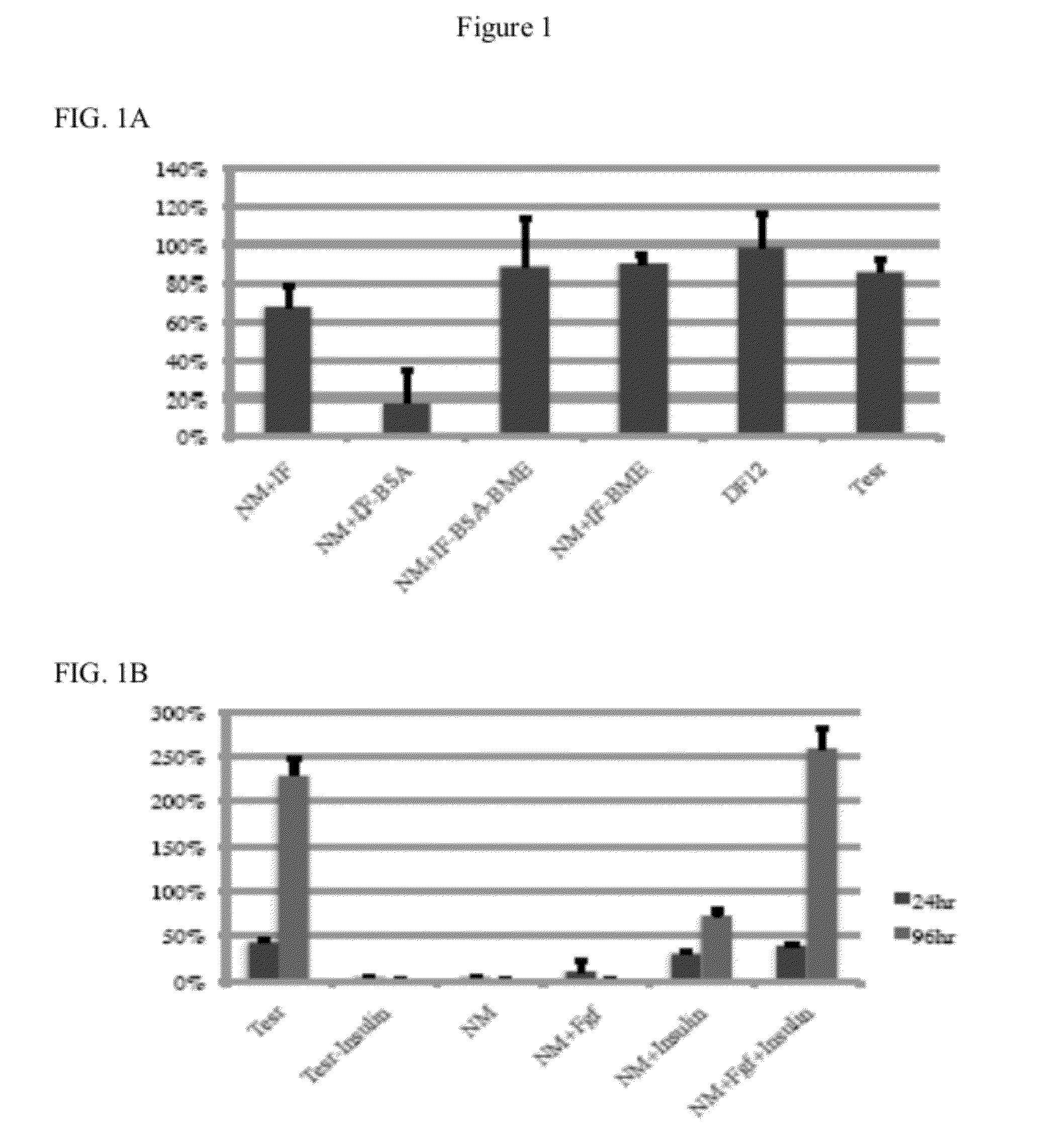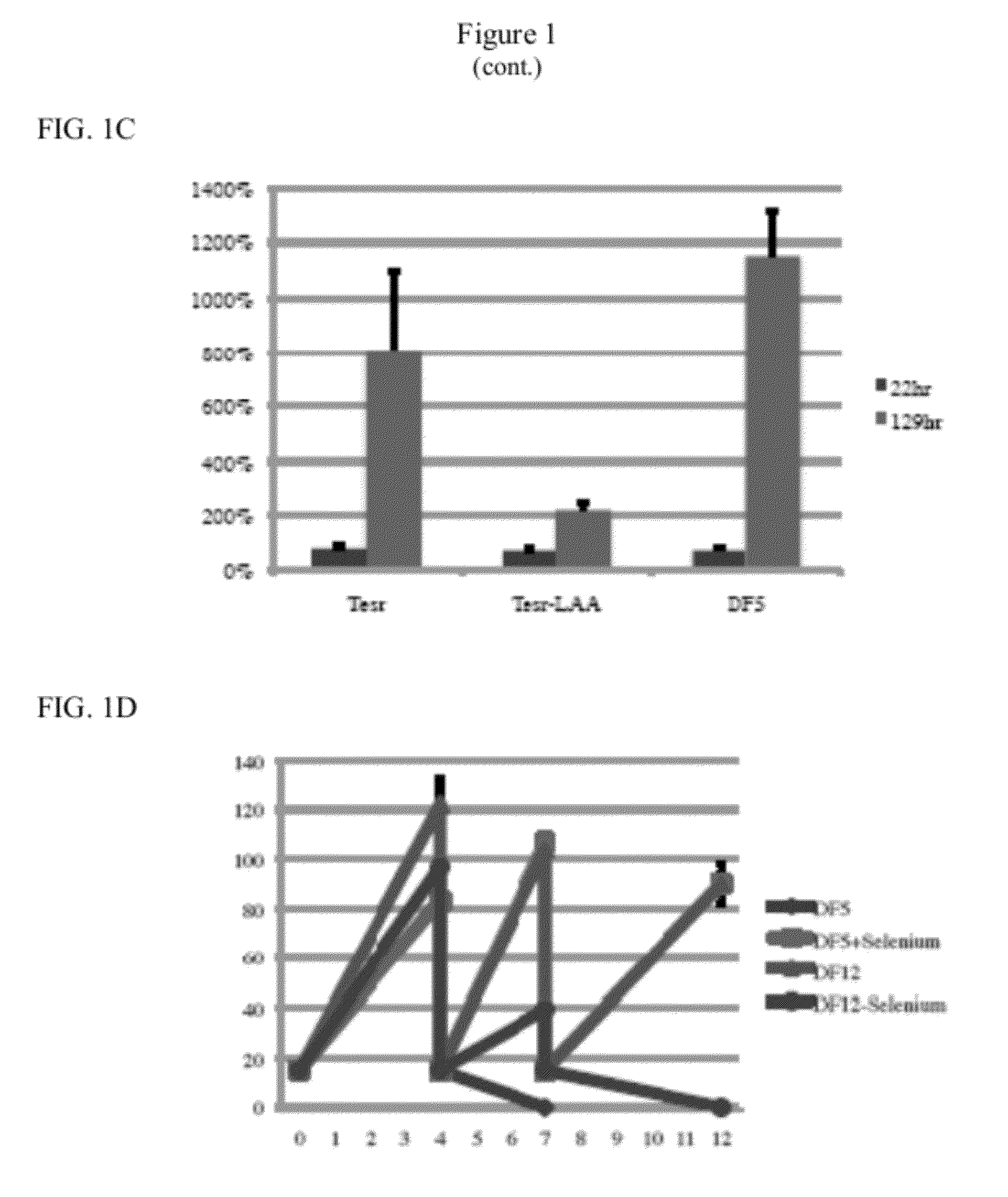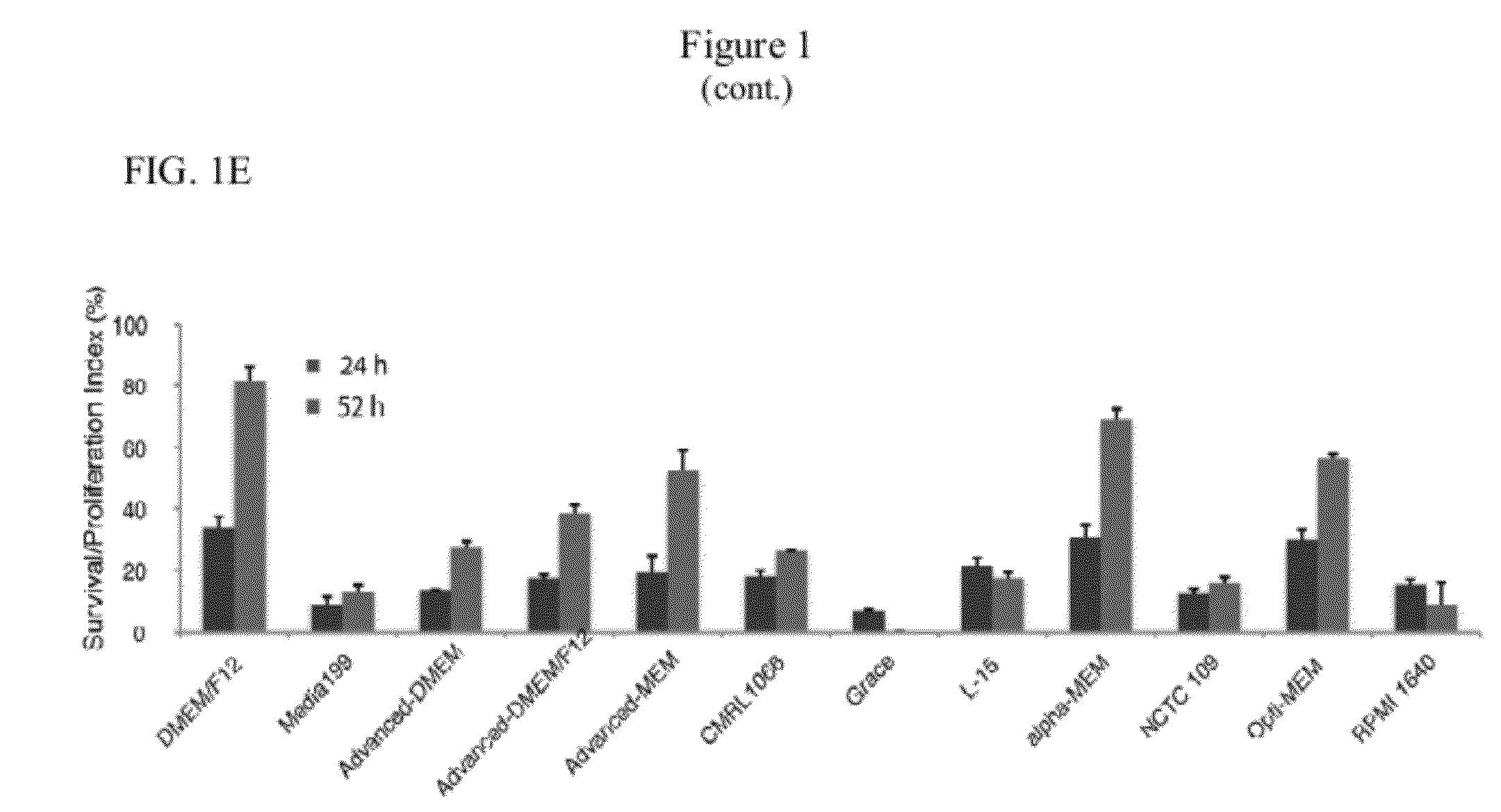Simplified basic media for human pluripotent cell culture
- Summary
- Abstract
- Description
- Claims
- Application Information
AI Technical Summary
Benefits of technology
Problems solved by technology
Method used
Image
Examples
example 1
Pluripotent Cell Survival Assay
[0071]Five-hundred micro liter of various test media was loaded into each well of 12-well plates prior to the addition of cells. Adherent pluripotent cells were dissociated with TrypLE (Invitrogen) for 5 minutes or until fully detached from the culture plates. TrypLE was neutralized by adding an equal volume of media to the culture. The cells were counted, washed, and resuspended in fresh media at a concentration of 300,000 to 1,000,000 cells / ml. Approximately 100 μl of this cell solution was added into each well of the 12-well plates and the cells were incubated at 37° C. with 5% O2 and 10% CO2. Cells were again dissociated at various time points using 0.4 ml TrypLE, which was subsequently neutralized with equal volumes of 10% FBS in DMEM. The cells were counted by flow cytometry. 5000 count bright beads were added to each sample as internal control (approximately 200 beads were counted for each sample). All experiments were performed in triplicates.
example 2
Growth Factors for Survival and Short Term Growth
[0072]TeSR medium contains six growth factors, in addition to those present in the basal medium, fibroblast growth factor (FGF), transforming growth factor beta (TGF-β), γ-aminobutyric acid (GABA), pipecolic acid, lithium chloride (LiCl), and insulin (Table 1). A basic nutrient medium (NM) was created containing all TeSR™ components with the exception of these six growth factors. About 2×105 H1 ES cells were dissociated and plated on Matrigel. The survival index was determined after 24 h. NM alone could not support cell survival after dissociation. The addition of insulin to NM resulted in cell survival similar to that observed with TeSR™, but did not support cell growth (FIG. 1A). The addition of both insulin (20 ug / ml) and FGF2 (100 ng / ml) supported cell survival and additionally led to cell growth in 96 h that was comparable to that observed using TeSR™ medium (FIG. 1B). Thus, NM supplemented with FGF and Insulin supports human ES ...
example 3
L-Ascorbic Acid Supports Short-Term Proliferation
[0073]NM contains 11 nutritional components, i.e., DMEM / F12, trace elements B, trace elements C, L-ascorbic acid, thiamine, selenium, L-glutamine, BSA, BME, sodium bicarbonate (NaHCO3), and transferrin (Table 1). DMEM / F12 serves as basal medium and NaHCO3 is used to modify the pH. To determine which other nutritional components were essential when insulin and FGF were present, each factor was added individually to DMEM / F12, NaHCO3, insulin, and FGF. None of the nutritional factors were essential for survival after passaging, but L-ascorbic acid (64 mg / L) was necessary for cell proliferation after passaging (FIG. 1C). L-ascorbic acid, known as Vitamin C, is a major antioxidant and cofactor of several enzymes. Hydroxyproline could partially substitute for L-ascorbic acid. Human ES cells plated in DMEM / F12, NaHCO3, L-ascorbic acid, insulin, and FGF (Defined Factors 5, “DF5,” Table 1) maintained similar morphology as human ES cells plated...
PUM
| Property | Measurement | Unit |
|---|---|---|
| Time | aaaaa | aaaaa |
| Angle | aaaaa | aaaaa |
| Angle | aaaaa | aaaaa |
Abstract
Description
Claims
Application Information
 Login to View More
Login to View More - R&D
- Intellectual Property
- Life Sciences
- Materials
- Tech Scout
- Unparalleled Data Quality
- Higher Quality Content
- 60% Fewer Hallucinations
Browse by: Latest US Patents, China's latest patents, Technical Efficacy Thesaurus, Application Domain, Technology Topic, Popular Technical Reports.
© 2025 PatSnap. All rights reserved.Legal|Privacy policy|Modern Slavery Act Transparency Statement|Sitemap|About US| Contact US: help@patsnap.com



